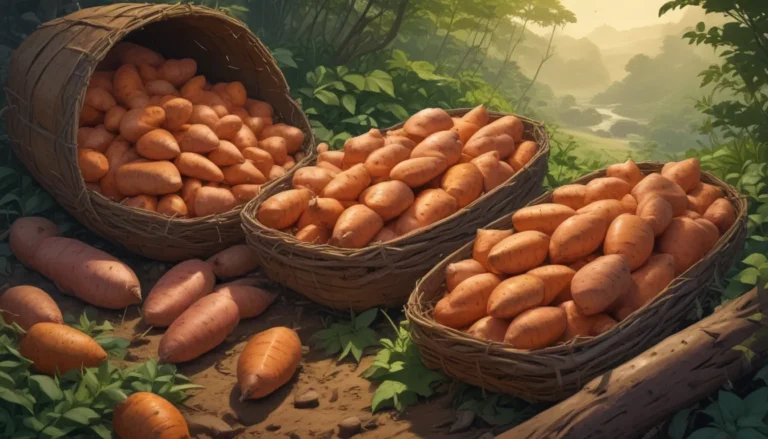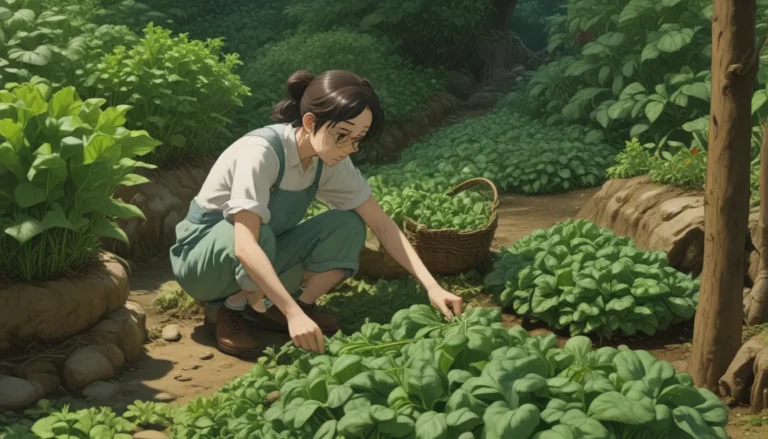The Ultimate Guide to Cold-Hardy Herbs Surviving Winter

Are you an avid gardener looking to add some cold-hardy herbs to your collection? Look no further! In this comprehensive article, we will explore 23 diverse culinary and medicinal herbs that can withstand freezing temperatures in the winter and bounce back with vigor come spring.
Introduction to Cold-Hardy Herbs
Cold-hardy herbs are a unique group of plants that go dormant in the winter, only to return in the spring, ready to flourish once again. Unlike tender annuals, these herbs can withstand the harsh conditions of winter, making them a valuable addition to any herb garden.
Let’s delve deeper into the world of cold-hardy herbs and discover some exciting varieties that you can grow at home.
1. Caraway
- Scientific Name: Carum carvi
- Growing Zones: 4 to 10
- Key Features: Bushy growth habit, biennial plant
- Culinary Uses: Signature flavor in sauerkraut
- Additional Information: Considered a perennial if left to self-seed
Caraway seeds are a common ingredient in seeded rye bread and sauerkraut. These biennial plants feature a bushy growth habit and can be grown as perennials if allowed to self-seed. A valuable addition to any herb garden!
2. Chives
- Scientific Name: Allium schoenoprasum
- Growing Zones: 4 to 8
- Key Features: Perennial herbaceous bulb plant
- Culinary Uses: Subtle onion and garlic flavor
- Additional Information: Ideal for garnishing baked potatoes
Chives, related to onions and garlic, are perennial herbs that thrive in Zones 4 to 8. With a subtle onion and garlic flavor, chives make an excellent garnish for baked potatoes and other dishes.
3. Comfrey
- Scientific Name: Symphytum officinale
- Growing Zones: 4 to 9
- Key Features: Perennial herb with tuberous root system
- Traditional Uses: Medicinal herb for salves
- Caution: Leaves emit a foul odor during fermentation
Comfrey is a perennial herb known for its medicinal properties. However, caution is advised as the leaves emit a foul odor during the fermentation process. This herb is best used for making salves.
4. Dill
- Scientific Name: Anethum graveolens
- Growing Zones: 2 to 11
- Key Features: Herbaceous biennial with feathery foliage
- Culinary Uses: Light, refreshing flavor reminiscent of anise
- Varieties: Elephant dill, one of the largest cultivars
Dill is a versatile herb with a light, refreshing flavor reminiscent of anise. Available in various cultivars, including elephant dill, this herb is a popular choice for adding flavor to dishes.
5. Fennel
- Scientific Name: Foeniculum vulgare
- Growing Zones: 4 to 9
- Key Features: Anise-like bulbs and seeds
- Culinary Uses: Sliced bulbs served fresh or cooked
- Additional Information: Seeds enhance baked goods
Fennel features anise-like bulbs and seeds that are used in a variety of dishes. Whether sliced and served fresh or cooked, fennel adds a unique flavor to both savory and sweet recipes.
6. Horehound
- Scientific Name: Marrubium vulgare
- Growing Zones: 3 to 9
- Key Features: Shrubby growth habit with woody stems
- Flavor Profile: Full-bodied with hints of vanilla and root beer
- Additional Information: Commonly used in candy recipes
Horehound is a perennial herb with a full-bodied flavor that includes hints of vanilla, root beer, and anise. This herb is often used in candy recipes and has a distinctive taste that sets it apart.
7. Horseradish
- Scientific Name: Armoracia rusticana
- Growing Zones: 2 to 9
- Key Features: Spicy, nose-clearing roots
- Culinary Uses: Commonly used to make horseradish
- Varieties: Common horseradish and Bohemian horseradish
Horseradish is known for its spicy, nose-clearing roots that are commonly used to make the condiment of the same name. With varieties like common and Bohemian horseradish, this herb adds a bold flavor to dishes.
8. Lavender
- Scientific Name: Lavandula spp.
- Growing Zones: 4 to 11
- Key Features: Shrubby plant with woody stems
- Flavor Profile: Floral-meets-pine fragrance
- Culinary Uses: Widely used in cosmetic, culinary, and curative applications
Lavender is a versatile herb with a floral-meets-pine fragrance that adds a unique flavor to dishes. Whether used in cosmetics, culinary creations, or for medicinal purposes, lavender is a valuable addition to any herb garden.
Conclusion
In this comprehensive guide, we have explored 8 out of the 23 cold-hardy herbs that can survive the winter and thrive in your garden. From the spicy roots of horseradish to the aromatic flowers of lavender, these herbs offer a diverse range of flavors and medicinal properties.
Stay tuned for the next installment, where we will continue our journey through the world of cold-hardy herbs and discover even more exciting varieties to grow at home. What cold-hardy herbs are you growing in your garden? Share your favorites in the comments below!





